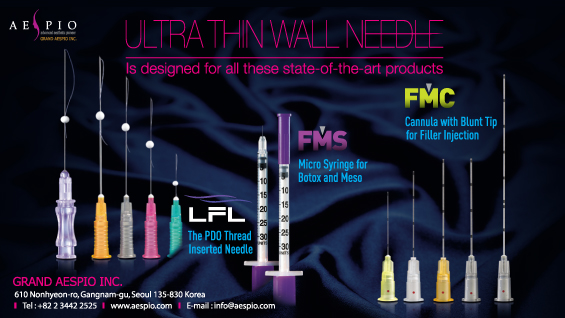
To return to our discussion on permanent make-up and tattoo, how do these two words differ in meaning? Permanent make-up is referred to as “semi-permanent make-up” in Korea, to give the impression of changeability. I believe the term “semi-permanent” is misleading. I found below classification of tattoo and permanent make-up posted in the internet by a nameless dermatologist(Table 1).
.png)
Table 1. Comparison between tattoo and permanent make-up posted on the internet by a dermatologist.
According to Table 1, the distinction between tattoo and permanent make-up seems clear. However, this is not accurate. This doctor said permanent make-up disappears in 3-8 years, however, this is not possible. If the permanent make-up is carried out correctly, it would last permanently. If the ink remains in the dermis for 1-2 months after the procedure, it is likely to remain permanently. The range of 3 to 8 years is very unclear as well. I wonder in which cases it could be 3 years or 8 years. He may have meant it as using certain techniques to make it last 3 years or 8 years. However, this would take an incredible level of skills on the part of the tattooist. Simply put, it is not possible.
Second, he described the color of tattoo as dark blue. I think he meant the color of old, fading tattoos that were performed by an amateur. However, the fading color of an old tattoo cannot be accurately described as dark blue. The oxidized carbon often takes the colors of faded gray or black(Figure 1).
.jpg)
Figure 1. Fading tattoos(5, 7 years after procedure).
Third, it is difficult to adjust the depth of the tattoo. According to Skin Thickness of Korean Adults published in Surgical Radiologic Anatomy in 2002, Y. Lee and K. Hwang of Inha University Medical School reported that the dermis is the thinnest at 469-645µm (0.469-0.645mm) in the eyelid, foreskin, inguinal area, and postauricular area. The dermis is the thickest at 1977µm in the back of the torso. They found the dermis is 1318- 1586 µm thick in the gluteal area, chest, and neck and the epidermal thickness ranges from 31 to 637 µm, with that of foreskin, eyelid, above clavicle, postauricular area and armpit being 31-71 µm and that of the palm of the hand and sole of the foot being the thickest at 601-637 µm.
[Advertisement] ULTRA THIN WALL NEEDLE – Manufacturer: AESPIO(www.aespio.com)
Considering permanent make-up is most frequently carried out in the eyelid, lips and eyebrow, the depth of the tattoo should be adjusted to around 0.5mm into the dermis. Moreover, one has to target the upper layers of the dermis, which is very difficult for practitioners. For these reasons, tattooists may want to tell their customers that the permanent make-up is, in fact, not permanent and will only last 3-8 years. It is true that tattoos do fade with time as the live tissues naturally react to the infiltration of ink, a foreign substance. However, one should clearly explain that the ink will only fade and not completely disappear.
This is also important for avoiding legal problems under the medical milieu in Korea that only medical doctors can be allowed to practice tattoos. Lastly, complications also prevent doctors from entering this market. Various undesired reactions could follow when a foreign substance is injected into human body. Complications include mild pruritus and other mild allergic reactions as well as skin necrosis in some cases. They are more likely caused by poor techniques or the type of ink rather than the tattoo design or needle thickness.
People tend to think of tattoo as a form of art and take great deal of liberty in how it is performed. However, safety must be considered when the art is created not on canvas but on the human body. Therefore, the tattoo terminology should be accurately established. The term “semi-permanent” used in Korea to describe permanent make-up leads consumers to think it can be removed later. This is also useful to avoid the tough regulations of tattoo as it can be incorrectly categorized as non-tattoo. However, the term “semi-permanent” is inaccurate and misleading. Manufacturers of tattoo ink have researched and succeeded in producing permanent ink. Therefore, for the permanent make-up to disappear after a few years, a different ink would have to be used, rather than a different technique. In the following issues, we will discuss the history, social functions and different ink types of tattoo.
-To be continued




















